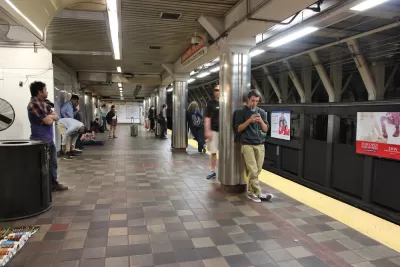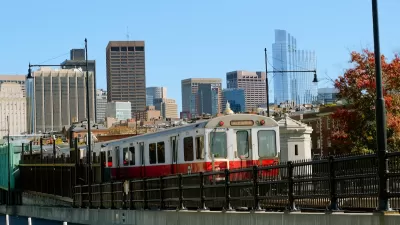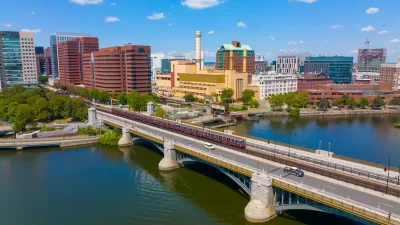A Twitter account is broadcasting its findings about the mood of transit riders in Boston, in real time.

Yesterday, I spent a total of about 20 minutes (unofficial tally) waiting on the Metro 201 bus in Los Angeles waiting to turn left at unprotected left turns while cars clogged intersections and cut in front of the bus in the line to turn.
I did another quick, unofficial tally, and estimated that I had spent 10,000 hours on buses waiting to turn left—10,000 hours of deliberate practice being Malcolm Gladwell's theoretical threshold for world-class skill (a theory that has since been debunked).
Needless to say, I wasn't in a good mood.
This morning I felt a little better, knowing that someone out there understands the pain (and joy, of course) of transit users.
"A new Twitter account called @MBTA_Mood, which has no affiliation with the MBTA, has been analyzing the overall mentality of some MBTA riders based solely on their tweets, and then regurgitating the information back to the general public on social media," reports Steve Annear.
So, for example, yesterday at 9 am, about the same time I would eventually be waiting for the 201 to turn left at 6th and Vermont in Los Angeles from a duration of time easily longer than five minutes, the account tweeted: "There was a fall in rider mood over the past hour. Analyzed 68 tweets, with 52.41% feeling Sadness. #MBTA #MBTAMOOD."
The creator of the Twitter account wishes to stay anonymous, but the tool used to generate the mood analytics is not: the IBM Watson Tone Analyzer, "which uses linguistic analysis to detect emotion in text and 'predict whether they are happy, sad, confident, and more,' according to IBM’s website."
FULL STORY: This Twitter account tells you the general mood of MBTA riders by the hour

Trump Administration Could Effectively End Housing Voucher Program
Federal officials are eyeing major cuts to the Section 8 program that helps millions of low-income households pay rent.

Planetizen Federal Action Tracker
A weekly monitor of how Trump’s orders and actions are impacting planners and planning in America.

Ken Jennings Launches Transit Web Series
The Jeopardy champ wants you to ride public transit.

Milwaukee Road to Get Complete Streets Upgrades
The city will reduce vehicle lanes and build a protected multi-use trail including bioswales and other water retention features on its ‘secret highway.’

Tackling Soil Contamination With Nature-Based Solutions
Los Angeles County residents and experts are turning to nature-based methods like bioremediation to address long-standing and fire-exacerbated soil contamination without resorting to costly and disruptive removal.

Rebuilding Smarter: How LA County Is Guiding Fire-Ravaged Communities Toward Resilience
Los Angeles County is leading a coordinated effort to help fire-impacted communities rebuild with resilience by providing recovery resources, promoting fire-wise design, and aligning reconstruction with broader sustainability and climate goals.
Urban Design for Planners 1: Software Tools
This six-course series explores essential urban design concepts using open source software and equips planners with the tools they need to participate fully in the urban design process.
Planning for Universal Design
Learn the tools for implementing Universal Design in planning regulations.
Ada County Highway District
Clanton & Associates, Inc.
Jessamine County Fiscal Court
Institute for Housing and Urban Development Studies (IHS)
City of Grandview
Harvard GSD Executive Education
Toledo-Lucas County Plan Commissions
Salt Lake City
NYU Wagner Graduate School of Public Service





























